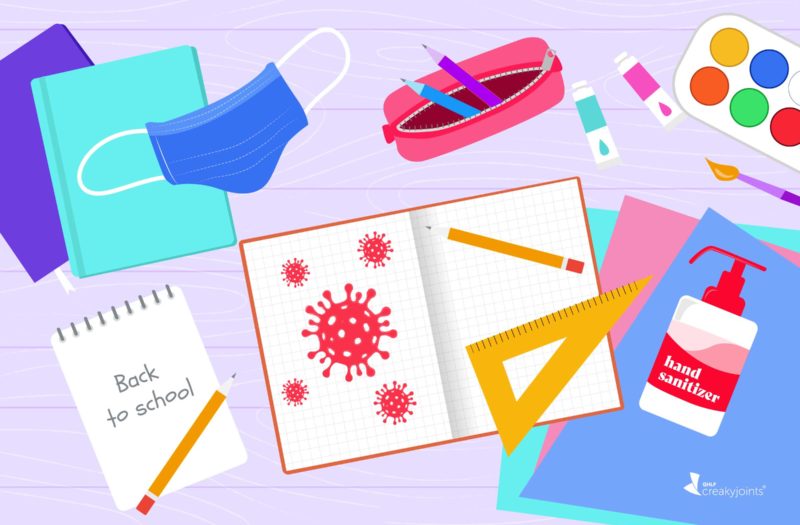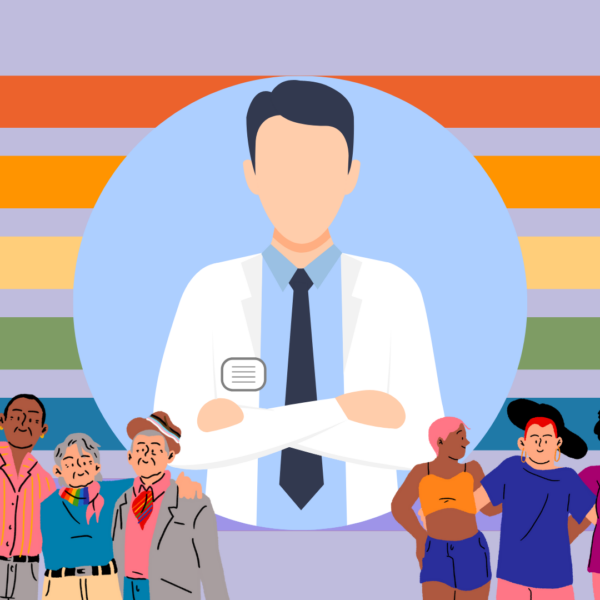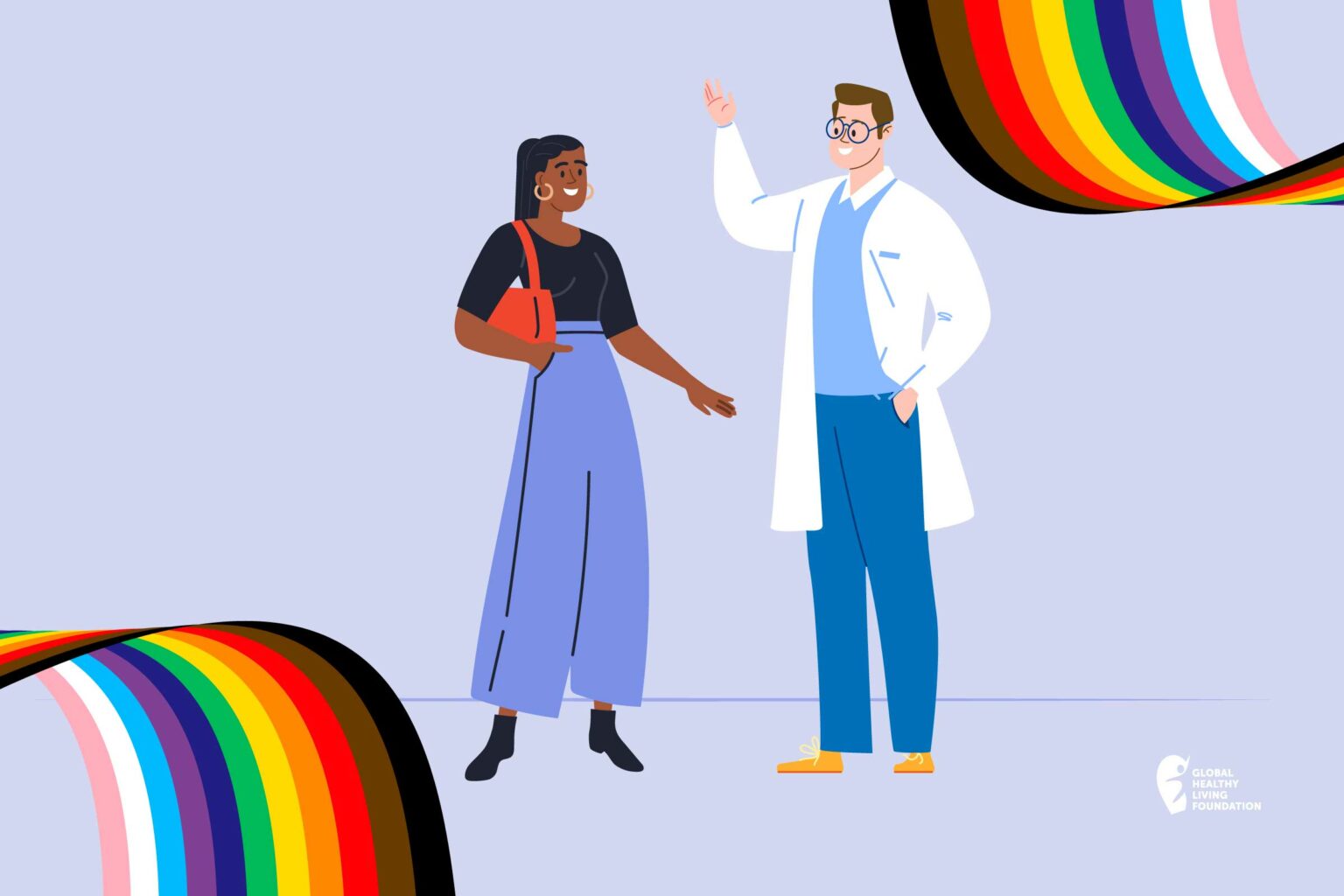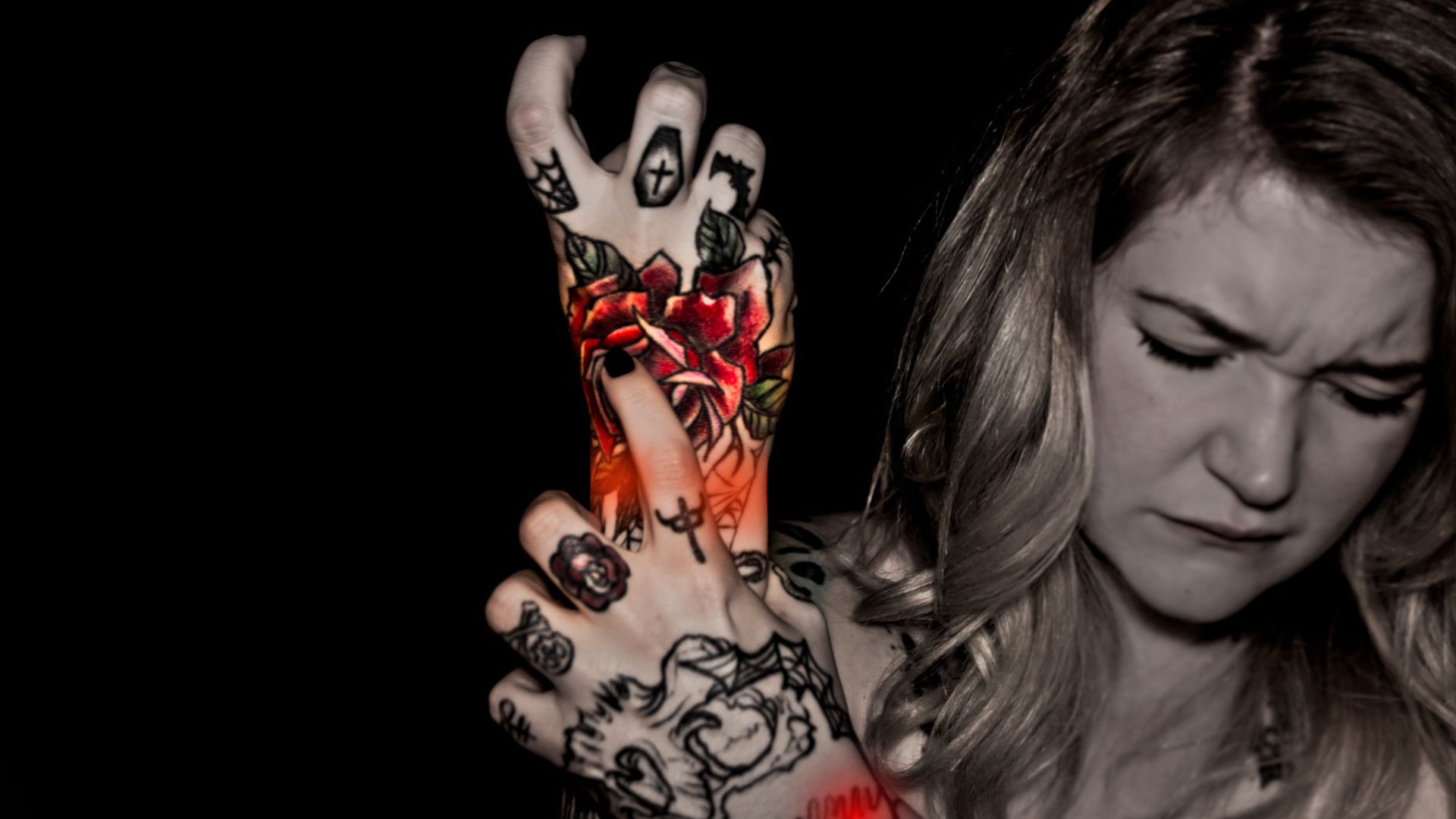Learn more about our FREE COVID-19 Patient Support Program for chronic illness patients and their loved ones.
This essay is by a CreakyJoints member who is a U.S. teacher. They are writing without a byline for privacy reasons.
As schools in every state are preparing to open or have already opened, many teachers like myself, are now forced to go into the abyss or risk the job that we love. I don’t know a single teacher who isn’t anxious or downright terrified about teaching a room full of students during the COVID-19 pandemic, but it’s even more nerve-wracking for teachers like me with underlying health issues.
Let’s face it: No teacher is in it for the money. You know how much we make and how it nowhere comes near what we deserve. In the early times of the pandemic when the whole country switched to virtual learning, every parent who was forced overnight to become teachers in their converted dining room and kitchen classrooms, said some version of the same thing. “My kid’s teacher does not make enough.” And it’s true, we don’t.
And that was before we needed to learn how to do our jobs now when every cough, sneeze, or picked nose could literally lead to death.
I say death because, I am not just a teacher. I have chronic medical conditions, including a form of inflammatory arthritis, that makes me immunocompromised. Most winters, I barely have the ability to fight off the common cold, let alone a mysterious coronavirus about which we still don’t know nearly enough.
I am writing here today to let you all know that I started my first full week teaching — and I don’t feel safe.
What My Teaching Environment Looks Like
I have chosen to write without a byline because I fear that sharing the true story of what I am up against could get me in serious trouble with my school and district administration. They have chosen to paint a positive painting of happy mask-wearing children to the public. And while it is somewhat true — the children are happy — the teachers who are more acutely aware of the real dangers we are in would paint a very different image.
My school system has chosen to teach a split schedule in which half the kids come in person Monday and Tuesday and the other half come in person on Thursday and Friday. Wednesday is for remote learning, which also gives the custodial staff a whole day to disinfect the building.
We have a mask policy, which is that if you are in the classroom with others less than six feet away or in the hall, you need to be wearing a mask. However, that only applies to our older students. Children under age 8 do not have to wear a mask. This was decided because the administration didn’t think young children would wear masks, and that little kids “can’t catch the virus.” They chose to ignore that they could still spread it, I guess.
Desks are supposed to be separated six feet apart, but the schools decided that distance wasn’t possible in some smaller classrooms so in those cases, three feet would be enough. All classrooms are supposed to be equipped with hand sanitizer stations, but that hasn’t happened yet. Handwashing has been built into the daily schedule, but there is no limit to how many kids can be doing it at the same time.
These are just a few examples of how rules were made, yet the ability to follow through was not well thought out. There are many more examples, a scary number of examples.
My ‘Accommodations’ as a High-Risk Teacher
I have a weakened immune system. Months ago, I requested to teach virtually and I shared with human resources all of my private medical information to show that being in a school could be dangerous for me.
They informed me that there were no virtual options available to me and they can’t legally use poor health as a reason to allow someone to work from home. It wouldn’t be fair.
“If someone came in with cancer and another person came in with arthritis, who should we give the virtual teaching job to? We could get sued,” they explained. OK, fine — point taken.
However, one of my 23-year-old coworkers who is in tip-top physical shape and in her second year teaching ever was assigned to teach virtually. So, how does that make sense? This isn’t cancer vs. arthritis. This is just nonsense.
In the end some accommodations were made — I was given a plexiglass barrier for my desk, for instance. But given the greater community in which I work, I’m not feeling very confident that this will make a difference.
What the Political Environment Looks Like
I live in one of the more tomato-colored states. Before my school closed last spring as the pandemic broke out, I witnessed students as young as 6 screaming, “COVID-19 is a lie made up to overthrow the president.” You know how 6-year-olds talk.
Looking around my community, it was much of the same over the rest of the spring and summer.
People chose to ignore my state’s short-lived “shelter-in-place” laws. They kept going out to any place that was open. Backyard barbecues and birthday parties were still celebrated, and kids still went to friends’ houses for playdates.
When the local mega gym closed, people protested. When Walmart greeters asked people to wear a mask, they were assaulted. And the biggest thing to happen was when the local chain of gas stations started offering communal foods like hot dogs and 32-oz sodas again. Everyone said, “It’s about time!” and crowded around the fountains.
Meanwhile, I’m still wiping down every grocery item I pick up curbside, and my spouse takes a shower after going into a store.
We were doing everything we could to protect ourselves, while our community was doing nothing to stop the spread.
So, fast forward to August.
My school district announces we will be going to school in person four days a week with half the students each day. The parents protested. Not because they didn’t want their kids in school risking their lives, but because they wanted them to go all five days, full population, in person.
I don’t know what your school looks like, but here, the smallest classes have 25 students in desks that touch, and no space for an adult to walk between. A kid in the first desk could infect the kid on the other side of the room in no time.
So ring the bell, it’s time to start school.
The First Week Back
So, here I am, standing in my school, ready to help direct new students to their classrooms, and what do I see? A sea of parents not wearing masks along with their children who are wearing masks. Most on their faces, but a few on their chins. Chin straps, I think to myself.
Our assistant principal is out front trying to stop them and tell them that masks are required. Well, nobody wants a fight in front of a bunch of schoolkids, right?
“I am healthy, you can’t force me to wear a mask!” I heard one parent declare. Another one chimed in, “You’re just inciting fear with the children!”
And my personal favorite: A child cried out, “Mommy, we forgot my mask!” The mother responded, “Why do you need one?”
These are masks we are talking about, right? A bit of cotton with ear loops? What is all the fear about? What could it possibly hurt?
Once we got through the arrival drama, I will say that the first day of classes, I was impressed with how the kids were able to keep their masks on.
But day two? I guess it had been long enough because mask fatigue had already set in. Suddenly the same kids who had no problem wearing a mask the day before just couldn’t do it anymore. Screams of “I don’t want to wear a mask!” echoed down the hallway.
Hearing this, I became acutely aware that this COVID-19 educational experiment might not be as easy breezy as the administration was hoping.
Even worse, it wasn’t just the kids. I started seeing more and more teachers lowering their masks to talk to the class, or just taking them off completely. I would later hear in the communal space they had made for teachers to eat, “I don’t know how long they expect us to wear masks, it’s not like they do anything to stop the virus”
Really? Really. This was after two days.
I’ve been wearing masks for years — well before COVID-19 — and they can’t last two days?
I just can’t wait for when some of these students’ true personalities come out and they start playing “COVID tag.” You can guess what I mean. Lick your hand and try to touch your friend. Or bullies coughing in people’s faces. I asked my administration about what would be the repercussions of doing this and got no response.
The bottom line is …
I Don’t Feel Safe
I know my body. I know how well my immune system works. I don’t fight off illness well. I know if I catch COVID-19, I will at risk for serious complications. If I had my choice I would not go anywhere, including working in my classroom, until our new infections get close to zero.
Unfortunately, I was pressured into returning to work in a place that is not safe.
Two of our district’s elementary schools have already lost their principals and office staff to illness or quarantine. Close to 100 students will miss the first two weeks of school for the same reason. Yet, we still chose to open.
The parents aren’t taking things seriously, my fellow teachers and staff aren’t taking things seriously, and the students don’t know any better. If one person comes in with COVID, I fear it’s all over.
If I catch it because the people around me aren’t doing anything to stop it, I could just be over.
I love teaching, and I love my students, but this is not worth risking my life for.
My school district caved to political and financial pressure and that is why we are open. Not because they honestly think they can keep anyone safe.
If you are a parent or teacher or anyone who is worried that your school reopening could have negative consequences for your community’s health and safety, let your district officials know. Much like wearing a mask, it can’t hurt, but it can help.
Get Free Coronavirus Support for Chronic Illness Patients
Join the Global Healthy Living Foundation’s free COVID-19 Support Program for chronic illness patients and their families. We will be providing updated information, community support, and other resources tailored specifically to your health and safety. Join now.






